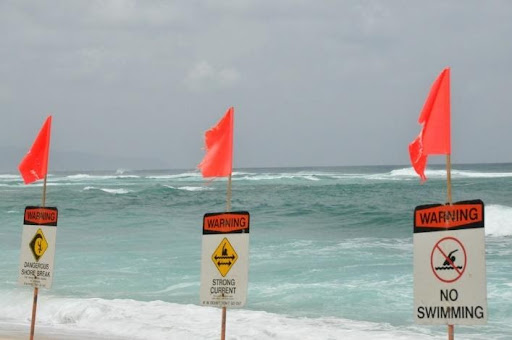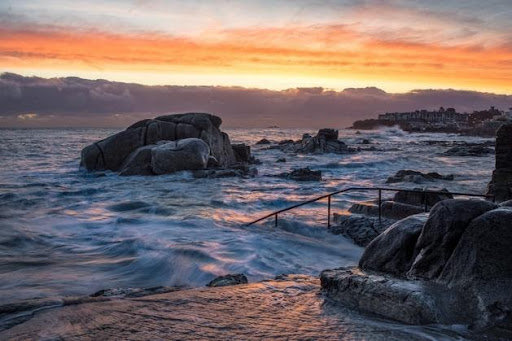Storm Surge: What Is It & The Definition
Storm surges have happened in many different places around the world throughout history. They tend to leave a lot of damage wherever they go because people have lost their lives and buildings have collapsed due to surge storms. That is why it is essential to learn about them, because scientists are continuously finding ways to predict when these storms will happen.
If you find this post helpful, make sure to send it to your friends and family who also want to learn about storm surges.
A tsunami-like or coastal flood of rising water is a storm surge. This tends to be associated with low-pressure weather systems. Scientists measure it by the rise in water level above the normal level of the tide.
Origin of Storm Surge
There are five different ways a storm surge can happen, direct wind, atmospheric pressure, the Earth’s rotation, other waves, and rainfall. You can read more about these five processes down below. However, it is important to note that a storm surge does tend to appear after a tropical storm or cyclone.
What Causes the Formation of a Storm Surge?
The main factor that contributes to a storm surge is high-speed winds. These winds push the water towards the coast over a long distance. Also, the shallowness and orientation of the water in the storm’s path contribute to the storm along with tides and the pressure of the atmosphere.
Occurrence and Characteristics of Storm Surge
A storm surge happens when there is a rise in sea levels due to tropical cyclones or intense storms. These storms produce powerful winds that move the water into the shore, leading to flooding.
How Are Storm Surges Measured?
Storm surges are measured at the coastal tidal stations. These stations can measure the difference between what was forecasted and what is happening with the rise of the water. Additionally, as the storm approaches, it can be measured by the amount of pressure that has been deployed along the coastline.
Factors Influencing Storm Surge

Direct Wind Effect
When there are strong surface winds, they can cause currents at a 45-degree angle known as the Ekman Spiral. When the wind does this, a wind setup happens. This means that the water levels tend to decrease at the upwind shore and increase at the downwind. You want to imagine that the water is in a container and the wind is blowing it to one side of it.
Wave Effect
With the help of the wind, the effect of waves can help the storm’s current. Wind can conjure up strong waves in the direction of its movement. These waves are responsible for the water by the shore because the waves are moving more water to the beach. When the waves break, it brings a lot of force that can cause the waves to go up the shore itself.
Rainfall Effect
Areas that are partially closed and have a mixture of fresh water and saltwater from the ocean tend to experience the most rainfall – these areas are called estuaries. This is where hurricanes can drop as much as 12 inches of rain in 24 hours. The water can quickly transfer from the surface and into the streams and rivers when this happens.
Afterward, the water levels will rise near the entrance of these areas, so when a storm occurs, it has added water to work with as it makes its way inside of the estuary.
Earth’s Rotation Effect
The Coriolis effect is when the Earth’s rotation causes the currents to bend to the left in the Southern Hemisphere and the right in the Northern Hemisphere. When this bend happens, the currents have more contact with the shore, amplifying the surge.
Atmospheric Pressure Effect
If there is a tropical cyclone, the water level in the open ocean begins to rise in low atmospheric pressure and fall in regions of high atmospheric pressure. When the water level rises, it counteracts the low atmospheric pressure, so the pressure of the water beneath it remains constant. Also, this effect means a 0.39-inch increase in sea level for every millibar drop in atmospheric pressure.
How Are Storm Surges Related to Coastal Communities?
Many scientists theorize that as the extreme weather becomes more intense and with sea levels continuing to rise due to climate change, storm surges will be a bigger problem for coastal communities. Storm surges leave a lot of structural damage to property and infrastructure when they hit communities.
These coastal communities and governments are now trying to adapt their infrastructure with soft infrastructure, surge barriers, mangroves, and more to help protect the properties. Additionally, they are introducing social strategies in schools and workplaces, so residents know how and where to evacuate if a storm surge happens.
Forecasting Storm Surge Using the SLOSH Model
SLOSH is used at the National Hurricane Center. The term SLOSH is an abbreviation for Sea, Lake, and Overland Surges from Hurricanes. This form of forecasting shows researchers the pressure of a tropical cyclone, its forward motion, the storm’s size, maximum winds it has sustained, and its track.
To get all of this information, scientists need to provide local topography, depth of the sea bottom, bay and river orientation, and other physical features into the grid called a SLOSH basin.
Impact of Storm Surges on:
Human Activities
Many people have lost their lives to storm surges. Also, it can cause many problems for crops because it can hurt the soil’s ability to grow and produce, which is not suitable for farming. This then means people do not have enough food to eat in the area.
Weather & Climate
When a storm surge happens, it can cause a lot of flooding in coastal regions. This is because it is bringing more water than usual into the area. Also, the strong winds that come with a storm surge cause buildings to fall and debris thrown around the area.
Infrastructure
Storm surges are responsible for a large portion of property damage. It does not only bring down built infrastructure but also can ruin the foundations of buildings.
Deadliest Storm Surges of All Times
The deadliest storm surge was the 1970 Bhola cyclone. This cyclone hit East Pakistan (a part of Bangladesh today) and India’s West Bengal. It is still known as the deadliest storm surge of all time. Nearly 500,000 people lost their lives during the storm. At the time, the storm had caused $86.4 million in damages in this area.
However, the deadliest storm surge in the twenty-first century was Cyclone Nargis. This cyclone killed more than 138,000 people in May 2008 in Myanmar.
After that, Typhoon Haiyan hit the Philippines in 2013. This typhoon killed more than 6,000 people and resulted in $14 billion in losses.
Facts About Storm Surge

- Storm surges happen when there are strong winds and rising sea levels.
- The worst winds in a storm surge are in the right-front quadrant of the storm.
- If the coast is curvy with many concave bays, the storm will be worse when it reaches the shore.
Conclusion
A storm surge causes much damage to coastal regions, and we must continue to learn about them. This is because if scientists can predict when these storms are going to happen earlier, then there is a higher chance of being able to evacuate more people from the area.
If you found this post helpful, remember to share it with your friends and family who also want to learn about storm surges.
FAQs About Storm Surge
What Are the Impacts of a Storm Surge?
There are many impacts of a storm surge, but some of the main impacts are on property and the environment. Storm surges can ruin property, erode beaches, wreck coastal habitats, and ruin foundations of infrastructure.
Additionally, many people have lost their lives during a storm surge.
What Causes Storm Surge to Be so Dangerous?
When a storm surge takes place, the surrounding area can be attacked with fast-moving waves that can be over 20 feet tall. The force at which these waves hit land is very dangerous and can wipe out almost everything in their path.
What Was the World’s Greatest Storm Surge?
Many people believe that the greatest storm surge was the one that happened in 1970 with the Bhola cyclone. However, that was the deadliest storm surge – killing around 500,000 people. The greatest storm surge in history is the one that occurred during the Tropical cyclone Mahina around Bathurst Bay, Australia.
This storm surge happened on March 5th, 1899. The storm surge itself was recorded to be 42 feet tall as it hit the shore.
How Can We Withstand the Storm Surge?
If you are aware that a storm surge is approaching, then make sure to take the following precautions:
- Check for supplies like medications, flashlights, radios, and batteries.
- Know your evacuation plan and where you need to go.
- Make sure that all basement windows are closed.
- Have your car topped off with gas, so you do not need to stop while you are evacuating.
What Is the Speed of a Storm Surge?
A storm surge moves along with a hurricane or cyclone, so it typically moves around 10-15mph.
Casper Henson
